THE ANDROMEDA STRAIN. One of the most important science fiction films in history
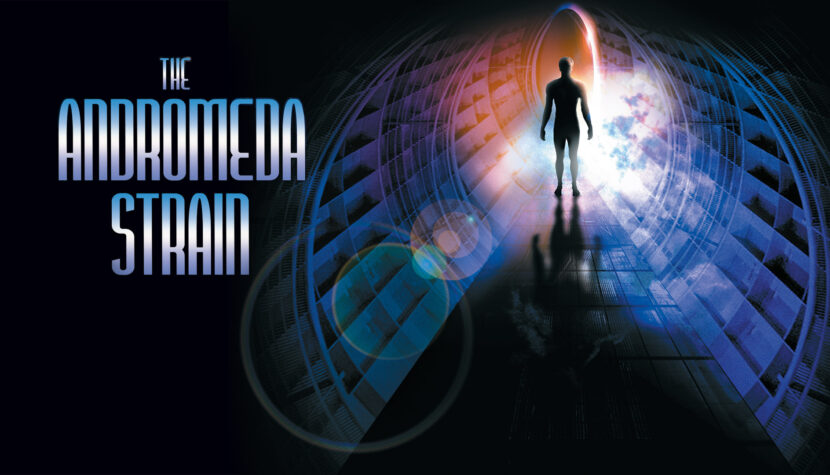
One of these typical issues undoubtedly includes contact with extraterrestrial life originating from space. As the mysteries of the universe were gradually unveiled by human exploration and scientific progress, the fear grew that the vast cosmos might not be inhabited by humans alone.
Sci-fi enthusiasts delighted in depicting various imaginative visions of encounters with extraterrestrials, leading to the well-known UFO myth in popular culture. However, in these visions, there was often (though not always) a noticeable dominance of fiction over science. The image of the alien was either based on the rich imagination of the creator or on the accounts of individuals who had supposedly experienced close encounters with extraterrestrials. Nevertheless, there are many examples of science fiction plots where contact with alien life forms is portrayed with exceptional care for scientific plausibility. Undoubtedly, one such example is Michael Crichton’s 1969 novel The Andromeda Strain, adapted into a film of the same title by Robert Wise in 1971.
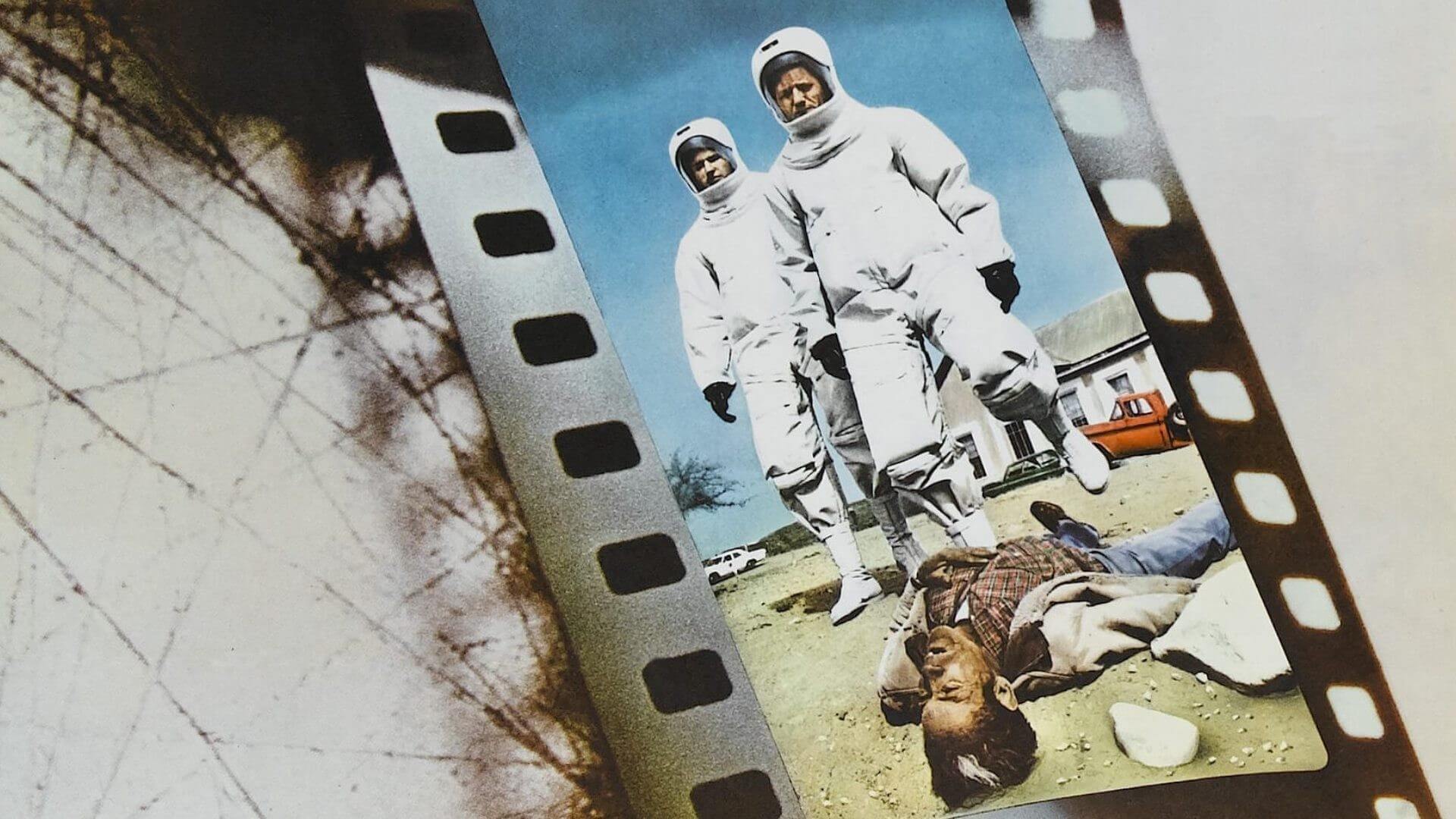
The Andromeda Strain ‘s plot was influenced by the mood of anxiety accompanying the early space flights. In the vicinity of a small village in New Mexico, a military satellite, designed to collect samples of microorganisms from the upper layers of Earth’s atmosphere, crashes. Shortly after this event, the residents of the nearby village die under unexplained circumstances, leaving only two survivors: a baby and an old drunkard. Everything indicates that the satellite brought a mysterious virus to Earth, posing a serious threat to the human population. A special group of scientists is convened to investigate the nature of the alien life form, referred to as Andromeda, in a specially prepared underground laboratory complex.
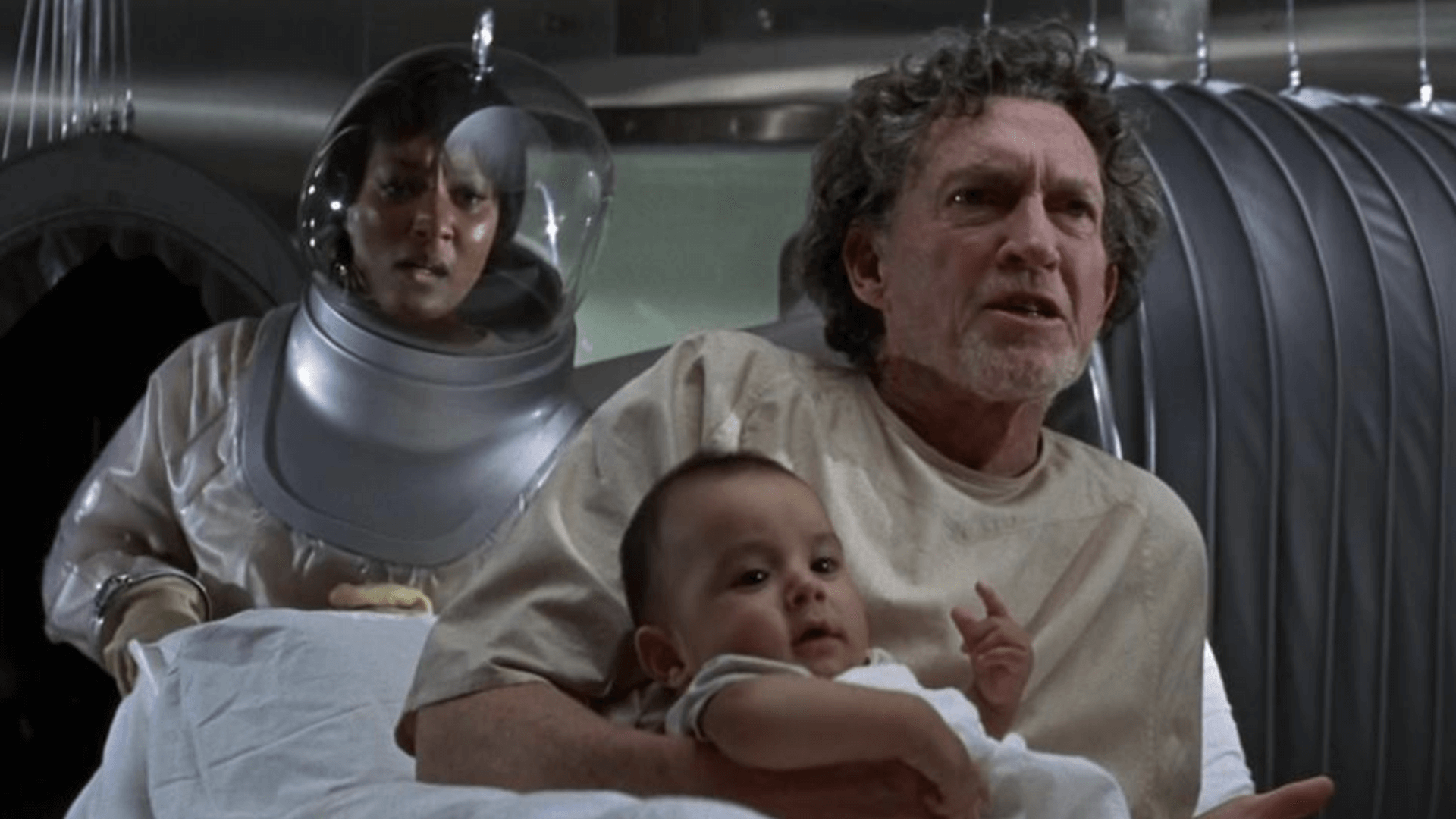
The extraterrestrial invasion occurs accidentally and unnoticed. While humans continuously peer through telescopes in search of unidentified flying objects, they are unaware that aliens may arrive on Earth in an entirely different form, and they, through their scientific curiosity, might contribute to such an encounter. If science is supposed to lead to technological advancement and improve the quality of our lives, thereby increasing our safety, in The Andromeda Strain, technology ultimately brings misfortune upon humans. The film, through its almost documentary narrative style based on a credible reconstruction of scientific procedures, may give the impression of affirming technological progress. However, it is precisely the scientists—the main characters of the film—who strive at all costs to contain the threat that they indirectly brought about through their life’s work. When the situation spirals out of control, the researchers’ behavior resembles that of laboratory rats, with the difference that, unlike popular rodents, they managed to lock themselves independently and fully consciously in a cage where they do not set the rules.
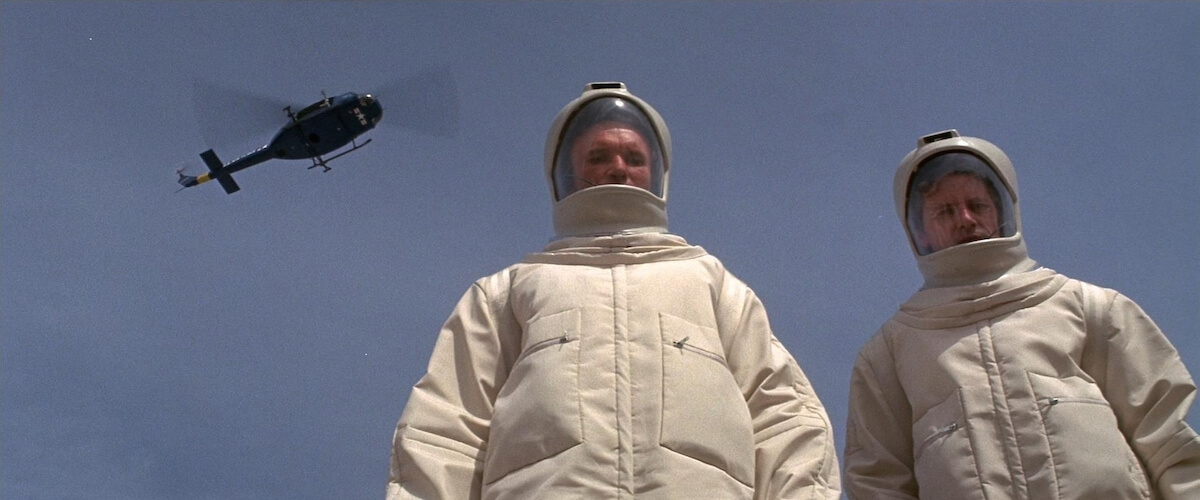
In addition to its thematic merits, the film is distinguished by elements of its form. A distinctive feature of the cinematography in The Andromeda Strain is the use of a split-focus lens, where elements placed on both the foreground and background are equally sharp. This interesting technique, driven by an appreciation for detail, can evoke additional tension in the viewer. Also noteworthy are the groundbreaking special effects for that time, concealed in the computer screens of the scientists, as well as the futuristic set design and brilliant editing, earning the film an Oscar nomination.
However, the element that complements this excellent form, and which I personally appreciate the most, is the music by Gil Melle. This showcase of electronic-psychedelic composition perfectly suits the atmosphere of unease caused by the extraterrestrial virus attack—ideal for creating a techno-terror atmosphere. The soundtrack of The Andromeda Strain is so peculiar and original, yet so cohesive with the imagery, that it is impossible to remain indifferent. It electrifies and captures attention from the first moments emanating from the speakers. What a shame that Gil Melle’s work received only a Golden Globe nomination.
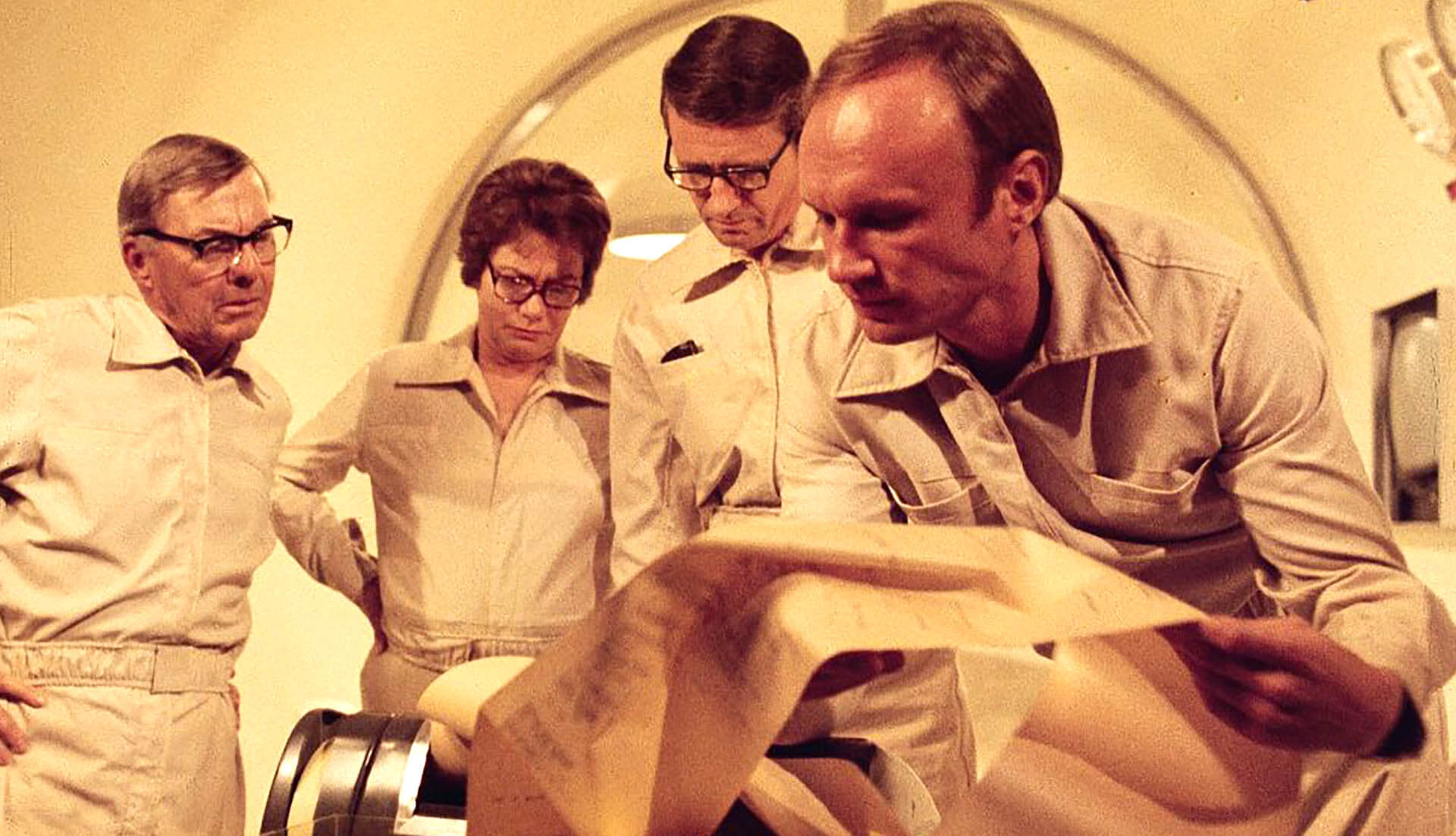
There is a musical curiosity associated with the film, or more precisely, with one of its dialogues. Are you familiar with the band “Apollo 440”? Yes, the British music group emitting a truly electronic sound, renowned for tracks like Krupa or Ain’t Talkin Bout Dub. It turns out that a curious connection exists between the band and The Andromeda Strain. In the 77th minute of the film, while scientists are engrossed in a computer screen systematically enlarging its image, one of them utters the words that mark the beginning of the famous track by the British band. I am, of course, referring to the quote “Let’s go back to the rock and see it at four forty.” Therefore, I assume that the members of Apollo 440 wanted to pay a kind of tribute to the film that inspired their electronic music.
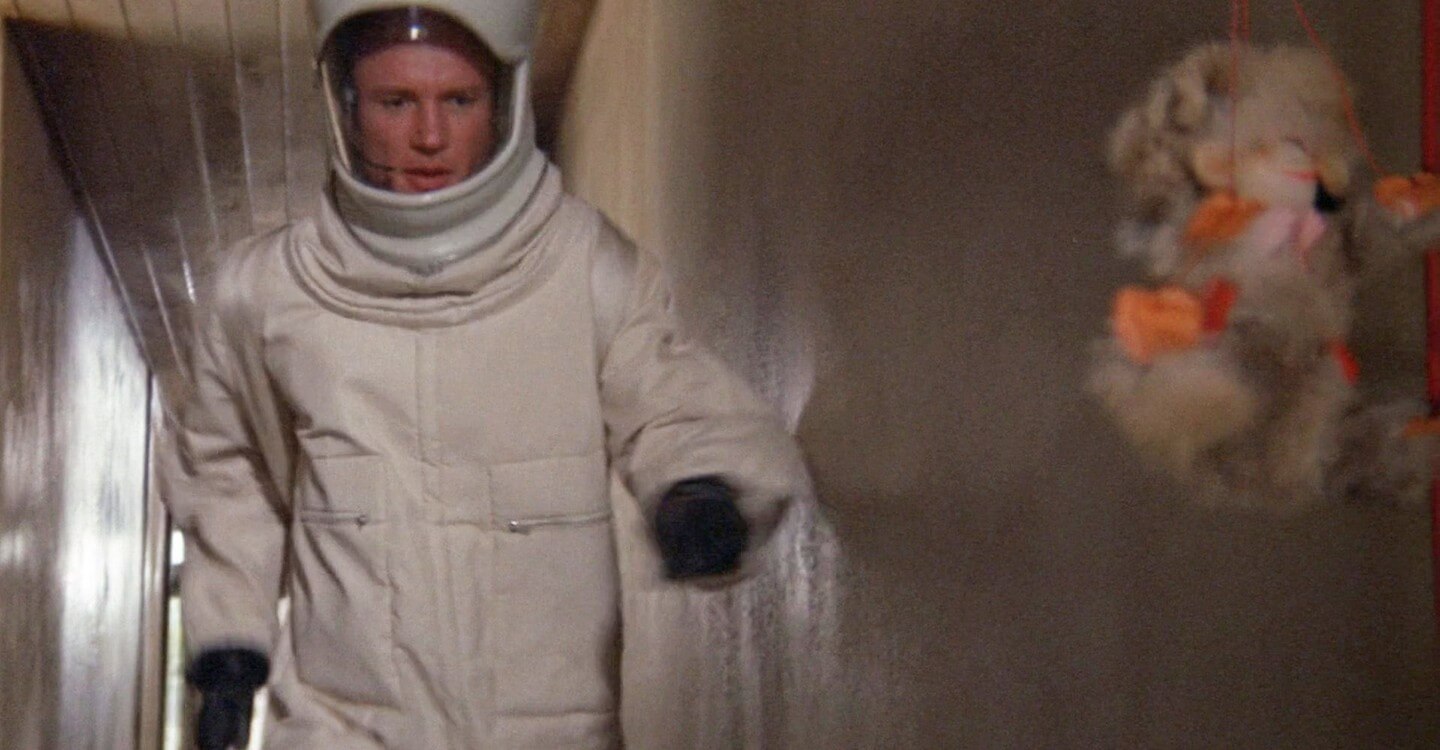
It is possible that The Andromeda Strain is one of the most important science fiction films in history, certainly one of the most significant films of this genre from the 1970s. Important because it can incredibly credibly convey the perspective of cosmic threat. It does not simplify, it does not gloss over the message; it terrifies with the degree of probability. It prompts introspection and raises the question—what is the real need for knowledge about whether we are alone in the cosmos?

